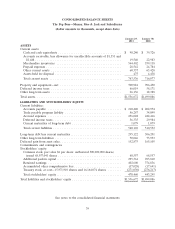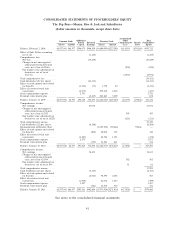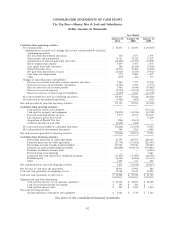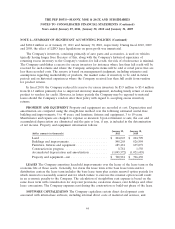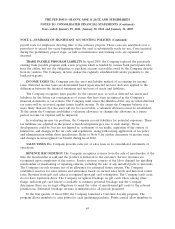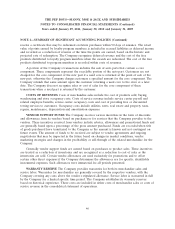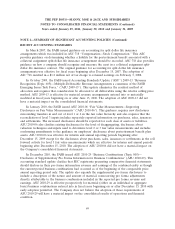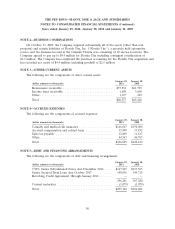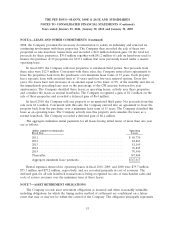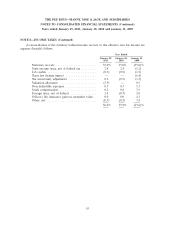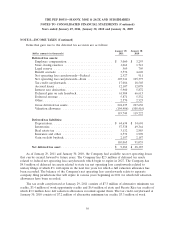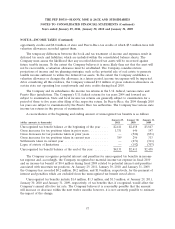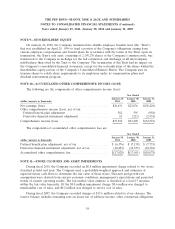Pep Boys 2010 Annual Report Download - page 106
Download and view the complete annual report
Please find page 106 of the 2010 Pep Boys annual report below. You can navigate through the pages in the report by either clicking on the pages listed below, or by using the keyword search tool below to find specific information within the annual report.
THE PEP BOYS—MANNY, MOE & JACK AND SUBSIDIARIES
NOTES TO CONSOLIDATED FINANCIAL STATEMENTS (Continued)
Years ended January 29, 2011, January 30, 2010 and January 31, 2009
NOTE 1—SUMMARY OF SIGNIFICANT ACCOUNTING POLICIES (Continued)
COMPREHENSIVE LOSS Other comprehensive loss includes pension liability and fair market
value of cash flow hedges.
DERIVATIVE INSTRUMENTS AND HEDGING ACTIVITIES The Company may enter into
interest rate swap agreements to hedge the exposure to increasing rates with respect to its certain
variable rate debt agreements. The Company recognizes all derivatives as either assets or liabilities in
the statement of financial position and measures those instruments at fair value.
SEGMENT INFORMATION The Company has six operating segments defined by geographic
regions which are Northeast, Mid-Atlantic, Southeast, Central, West and Southern CA. Each segment
serves both DIY and DIFM lines of business. The Company aggregates all of its operating segments
and has one reportable segment. Sales by major product categories are as follows:
Year ended
January 29, January 30, January 31,
(dollar amounts in thousands) 2011 2010 2009
Parts and accessories ................... $1,261,678 $1,219,396 $1,255,975
Tires .............................. 336,490 314,223 313,689
Service labor ......................... 390,473 377,319 358,124
Total revenues ....................... $1,988,641 $1,910,938 $1,927,788
SIGNIFICANT SUPPLIERS During fiscal 2010, the Company’s ten largest suppliers accounted for
approximately 53% of merchandise purchased. No single supplier accounted for more than 20% of the
Company’s purchases. The Company has no long-term contracts or minimum purchase commitments
under which the Company is required to purchase merchandise. Open purchase orders are based on
current inventory or operational needs and are fulfilled by vendors within short periods of time and
generally are not binding agreements.
SELF INSURANCE The Company has risk participation arrangements with respect to workers’
compensation, general liability, automobile liability, and other casualty coverages. The Company has a
wholly owned captive insurance subsidiary through which it reinsures this retained exposure. This
subsidiary uses both risk sharing treaties and third party insurance to manage this exposure. In
addition, the Company self insures certain employee-related health care benefit liabilities. The
Company maintains stop loss coverage with third party insurers through which it reinsures certain of its
casualty and health care benefit liabilities. The Company records both liabilities and reinsurance
receivables using actuarial methods utilized in the insurance industry based upon historical claims
experience.
RECLASSIFICATION Certain prior period amounts have been reclassified to conform to current
period presentation. These reclassifications had no effect on reported totals for assets, liabilities,
shareholders’ equity, cash flows or net income.
48



